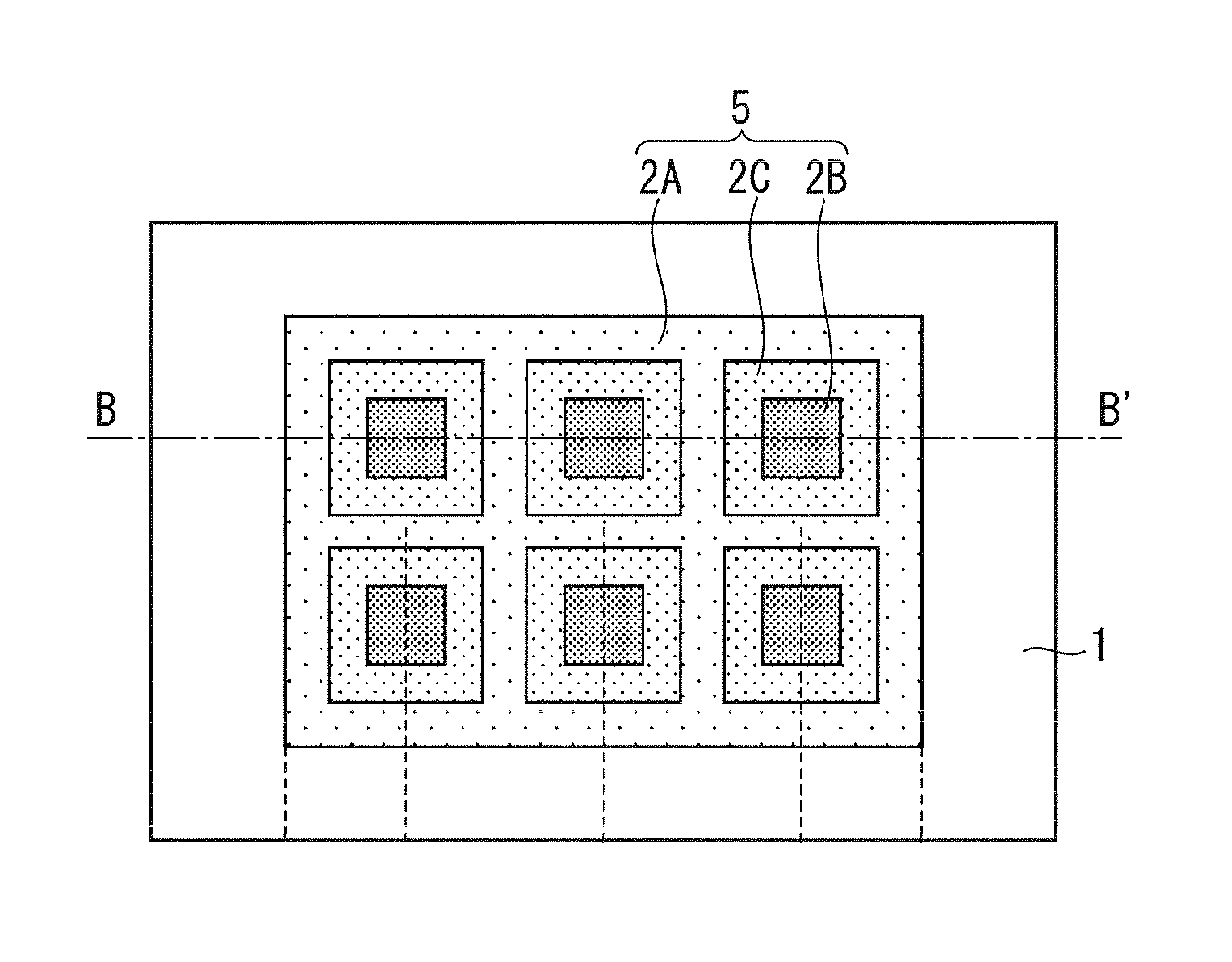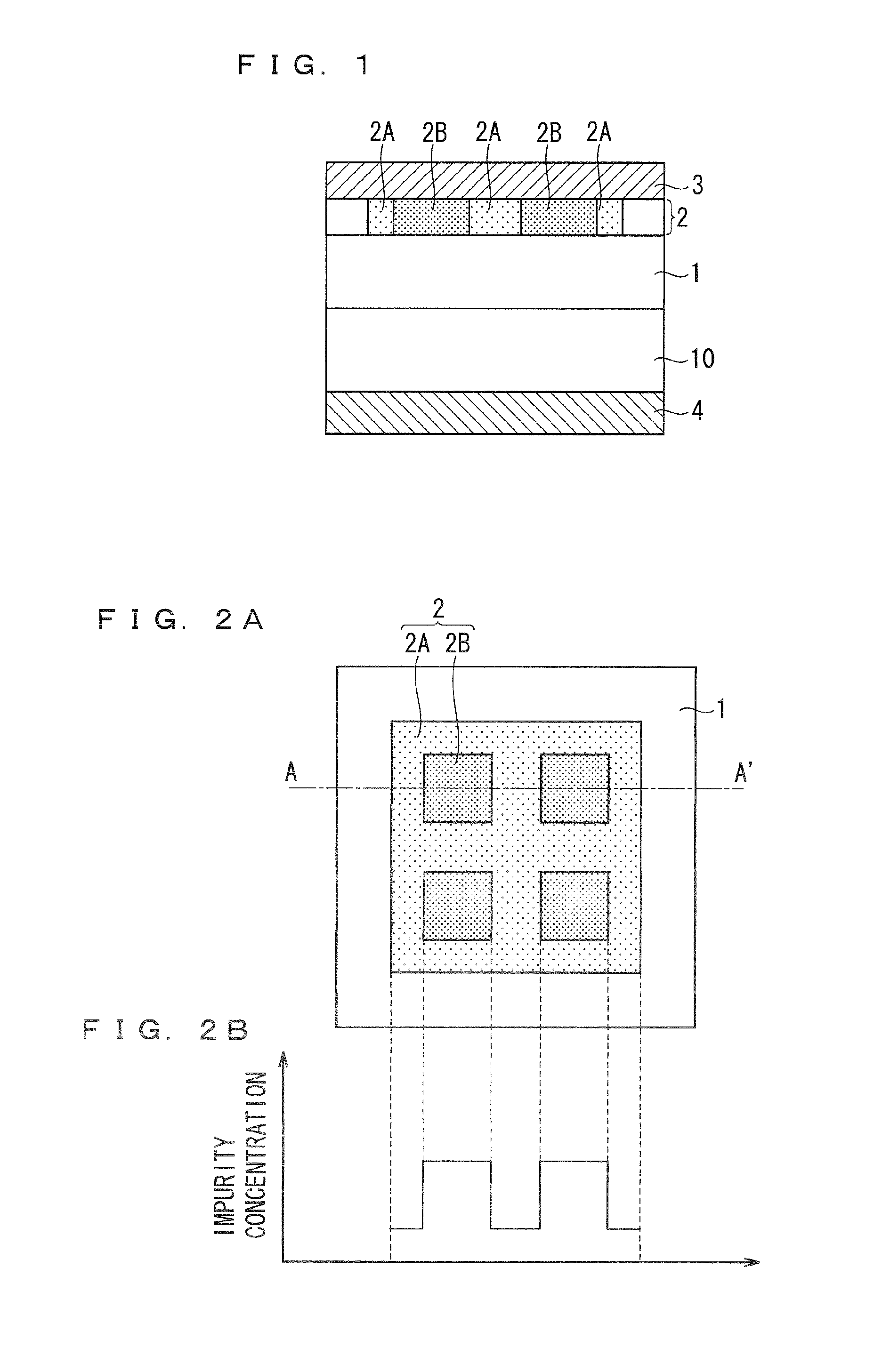Silicon carbide semiconductor device
a technology of silicon carbide and semiconductors, applied in the direction of semiconductor devices, basic electric elements, electrical appliances, etc., can solve the problems of increased leak current, increased loss of energization, and schottky barrier diodes, etc., and achieve the effect of sufficient breakdown voltag
- Summary
- Abstract
- Description
- Claims
- Application Information
AI Technical Summary
Benefits of technology
Problems solved by technology
Method used
Image
Examples
Embodiment Construction
[0028]Hereinafter, with reference to figures, discussion will be made on the preferred embodiment of the present invention.
[0029]
[0030]
[0031]FIG. 1 is a cross section showing a structure of a silicon carbide semiconductor device in accordance with the preferred embodiment of the present invention. Though a JBS or an MPS using silicon carbide will be shown as an example in this preferred embodiment, the silicon carbide semiconductor device of the present invention is not limited to these structures but may be an SBD, a MOSFET, or the like.
[0032]As shown in FIG. 1, the silicon carbide semiconductor device comprises an N−, -type (first conductivity type) silicon carbide drift layer 1 formed on an N+, -type (first conductivity type) silicon carbide substrate 10 by epitaxial growth, a P-type region 2 which is a second conductivity type region formed in a surface layer of the silicon carbide drift layer 1, a Schottky electrode 3 formed above the silicon carbide drift layer 1 corresponding...
PUM
| Property | Measurement | Unit |
|---|---|---|
| current | aaaaa | aaaaa |
| conductivity type | aaaaa | aaaaa |
| conductivity | aaaaa | aaaaa |
Abstract
Description
Claims
Application Information
 Login to View More
Login to View More - R&D
- Intellectual Property
- Life Sciences
- Materials
- Tech Scout
- Unparalleled Data Quality
- Higher Quality Content
- 60% Fewer Hallucinations
Browse by: Latest US Patents, China's latest patents, Technical Efficacy Thesaurus, Application Domain, Technology Topic, Popular Technical Reports.
© 2025 PatSnap. All rights reserved.Legal|Privacy policy|Modern Slavery Act Transparency Statement|Sitemap|About US| Contact US: help@patsnap.com



